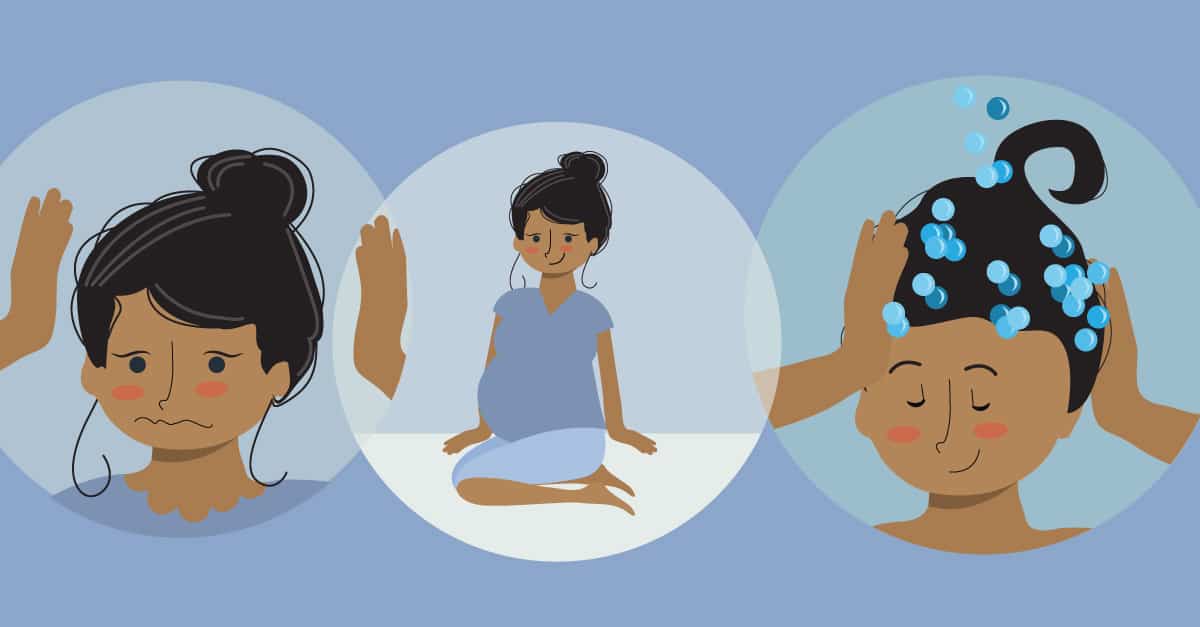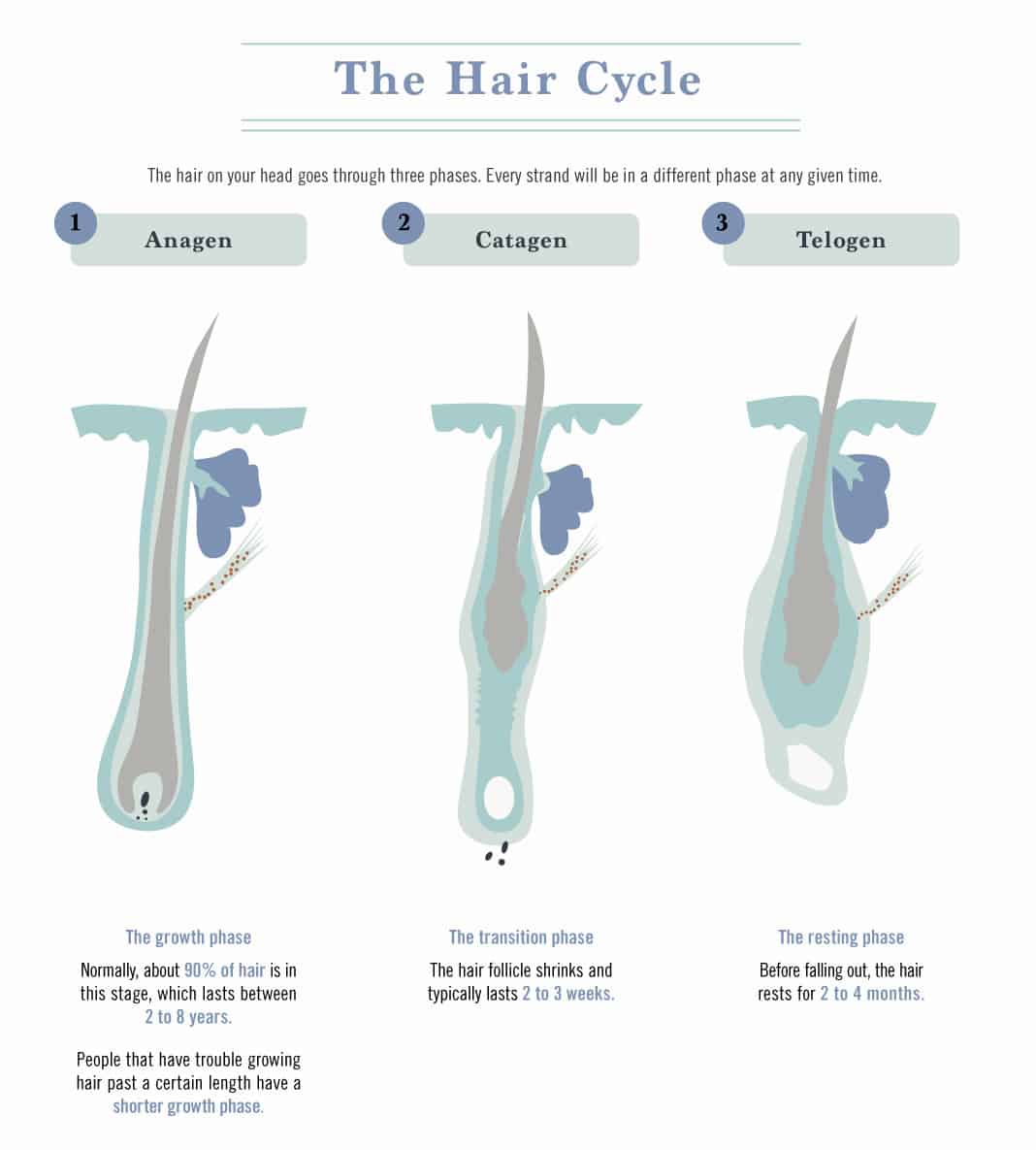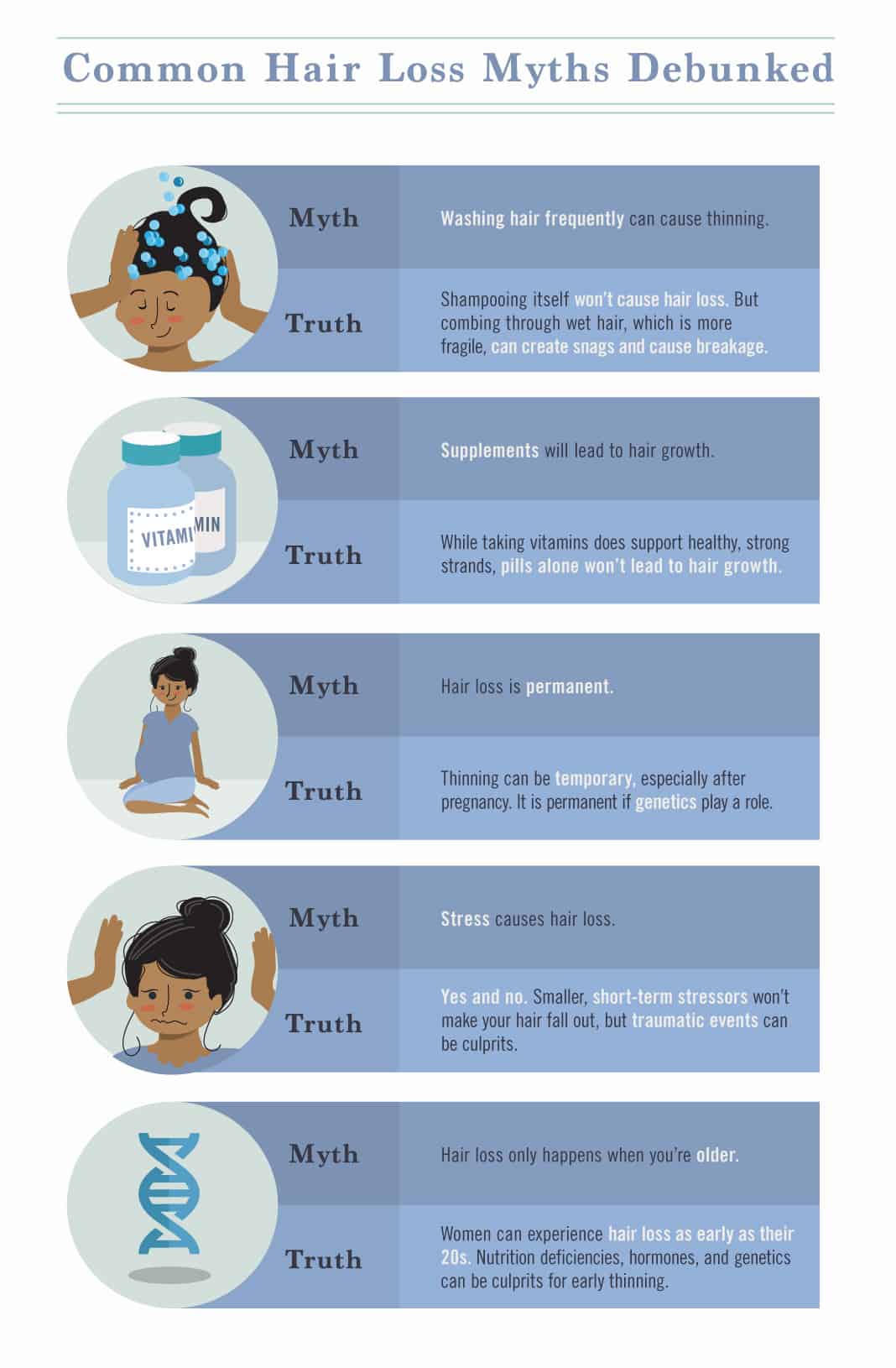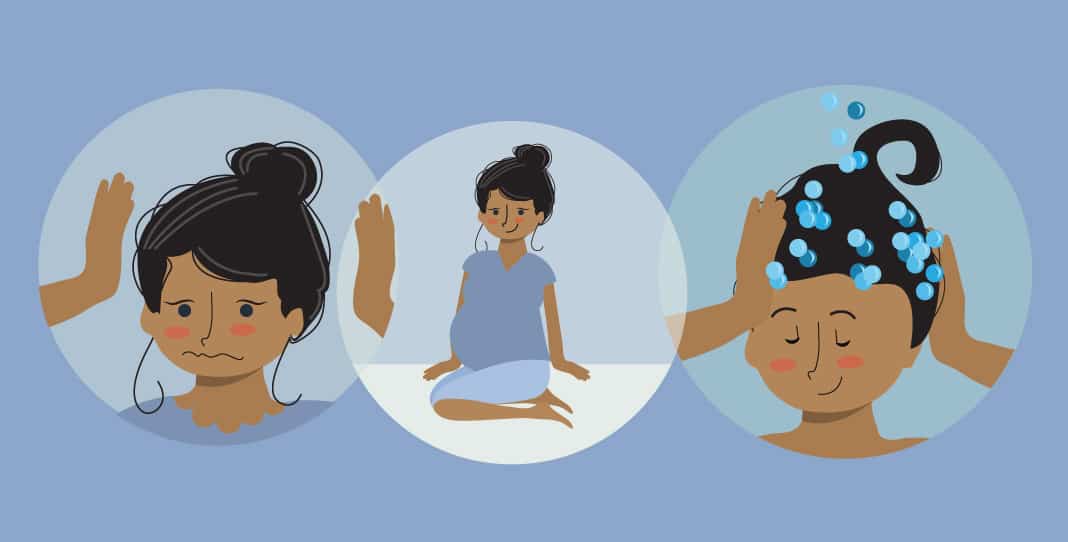
What to Look For
Baldness in men and women is caused by the chemical DHT. In excess, DHT prevents follicles from receiving nutrients. Since it is related to testosterone, men are more at risk, but since women produce both male and female hormones, baldness is a possibility for just about anyone.
People typically lose between 50 to 100 strands of hair per day and up to 250 on days hair is washed. (But don’t avoid washing: It’ll fall out anyway.) No need to count every loose hair, but do look for signs of change. Large clumps of hair on your pillow or comb are clear visual cues that you’re losing more than normal.
Figure out where your hair falls out. While men tend to notice receding hairlines, women’s hair tends to thin across their scalps. The part in the hair will slowly grow wider, or more of the scalp will be visible when hair is pulled back.
Causes of Female Hair Loss
Stress
Stress and physical trauma can cause multiple problems, including hair loss. Stressful events can trigger telogen effluvium, a common form of hair loss that pushes the hair growth cycle into the resting phase, meaning fewer follicles produce hair. Hair loss can become noticeable three to six months after a traumatic event but hair will start to grow back as the body recovers. Pregnancy can trigger hair loss, which commonly occurs after giving birth, but hair should grow back after a couple months. Emotional stress can also trigger hair loss, but is less common than physical stress. In this case, take steps, such as meditation or exercise, to curb stress and relieve anxiety.
Vitamins
An excess or lack of vitamins can also cause hair loss. Extreme amounts of vitamin A—more than 5,000 International Units (IU) per day—can trigger hair loss. Supplements typically contain between 2,500 and 10,000 IU, so monitor your intake.
Lack of protein can cause the body to shut down hair growth, which can occur about two to three months after a drop in protein intake. For vegetarians and vegans, there are plenty of protein-rich foods, including quinoa, green peas, nuts, and beans, that don’t include meat or other animal products.
Anemia due to iron deficiency can also trigger hair loss. It affects almost one in 10 women aged 20 through 49. A simple blood test can determine if you have anemia and an iron supplement can remediate the problem. Women should get 18 milligrams of iron a day and 8 milligrams post menopause.
Genes
Genetics also play a key role in hair loss. If close female relatives have experienced hair loss, one possible condition is androgenetic alopecia, a hereditary condition that affects about 30 million American women. It is most common in women in their 50s or 60s, but can start at a slower pace in women who are even younger. The size of follicles can indicate if genes are at fault: A blend of thick and thin follicles can signal female pattern hair loss. Women, not just men, can also benefit from minoxidil (the ingredient in Rogaine), which prolongs the growth phase.
 Hormones
Hormones
Similar to the effects of pregnancy, the hormonal shift from switching birth control pills can prompt telogen effluvium. Menopause can elicit the same effect. In both cases, the male hormone androgen becomes more active on the scalp, which causes hair loss. Pills with less androgen can benefit women who suffer from hair loss. If medication is the root of the problem, talk to your doctor about other birth control methods. (Note that going off the pill can also cause temporary hair loss.)
Polycystic Ovarian Syndrome
This condition causes the ovaries to produce an excess of male hormones, which results in irregular periods, cysts on the ovaries, and acne. While polycystic ovarian syndrome may ramp up facial and body hair production, it can also lead to hair loss on the scalp. Most cases can be treated by birth control specifically designed to block testosterone.
Hypothyroidism
Hypothyroidism is a condition in which the thyroid gland makes too little thyroid hormone. This disease affects millions of people—most of them women—and can cause brittle hair, nails, and skin. And while it’s much less common, hyperthyroidism (an overactive thyroid) can also cause hair loss. A simple blood test can measure thyroid hormone levels and determine if medication can help.
Unhealthy Scalp
Hair needs a healthy scalp to grow. That’s why skin conditions including dermatitis, psoriasis, and fungal infections may result in hair loss. Greasy, yellowish scales are likely dermatitis (dandruff). Thick white scales that bleed when pulled off could be psoriasis, and red patches could denote a fungus infection. A dermatologist can examine all of these conditions and prescribe a medicated shampoo if necessary.
How to Promote Hair Growth
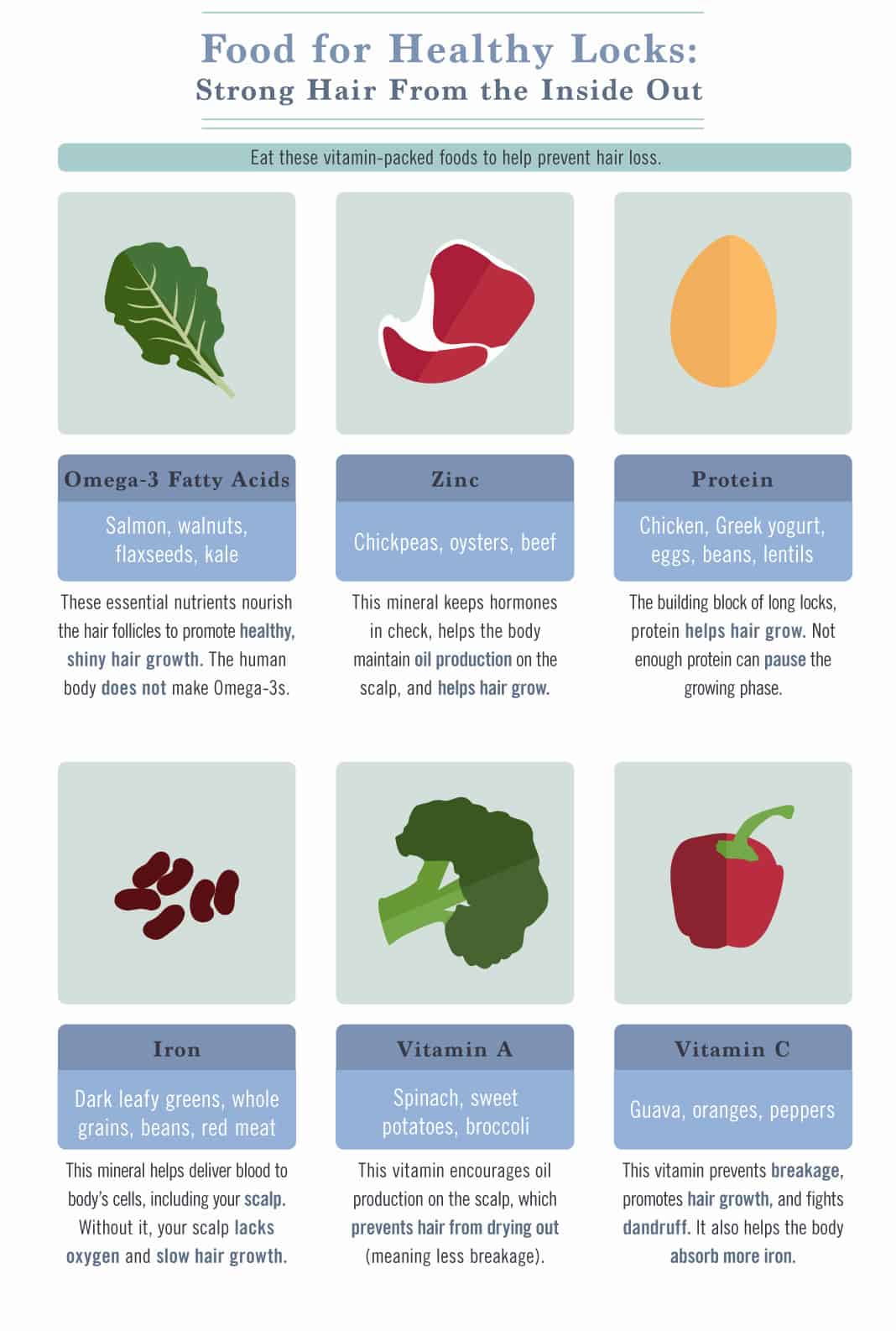
Heat styling weakens hair, resulting in increased breakage. If you color your hair, keep it to one or two shades from your natural color—more than that requires more damaging chemicals. Limit the use of hot tools and keep blow dryers on the cool setting if possible.
Try using a tea tree shampoo, which naturally soothes irritation and has antibacterial properties. If your scalp is flaky, tea tree could help moisturize and reduce flakes. Untreated scalp conditions can lead to permanently damaged follicles, causing hair loss. Talk to your dermatologist about any skin concerns you may have.
If at home remedies do not work for you, discuss additional hair growth options with a dermatologist. Hair transplantation, where follicles from one area of the scalp are transplanted to balding areas, offers permanent results.
Certain lifestyle choices can increase or decrease your chances for strong, healthy hair. Stress and poor diet are two primary factors that affect how much hair you may lose. For that reason, a well-balanced diet with plenty of vitamins, minerals, and protein can promote healthy hair growth. Exercise, meditation, and other stress-relieving activities can also decrease the chance for hair loss. Avoid smoking, excessive alcohol consumption, and too much sun exposure for extra protection.
